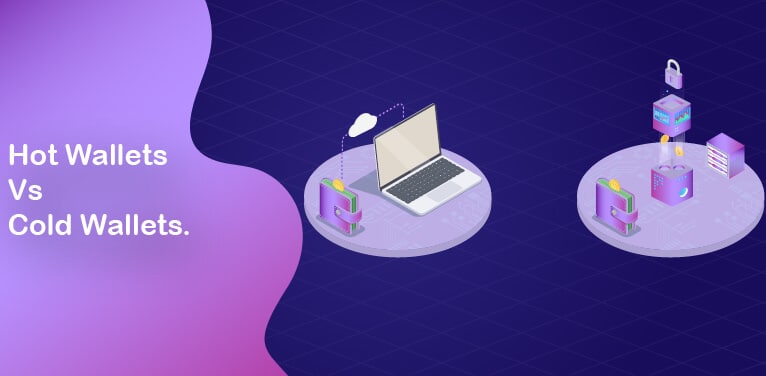There are different types of wallets out there when dealing with cryptocurrencies, from a hot versus a cold storage wallet to custodial and non-custodial wallets, and it might be confusing to some people in knowing what they should be using.
So let’s compare the two types of wallets out there to see the difference between them, and know when and how to use each one.
Hot Wallets vs Cold Wallets
The key main difference between the two is online connectivity, where cold wallets, like almost all hardware wallets, are ones where your seed phrase/wallet was created in an offline environment and is being used without connecting it to the internet directly.
While if we look at hot wallets, they’re the ones that were created in an online environment and are being used with a direct internet connection. examples of hot wallets would be either a cryptocurrency wallet mobile application, such as Exodus, Trust Wallet, WH Cypher, Guarda or Blue Wallet, where these would be categories as non-custodial hot wallets, and other examples include wallets on various exchange platforms and some payment services like PayPal or Robinhood, are custodial hot wallets.
In other words, hot wallets have your private keys/seed-phrase exposed to the internet, while they’re not on cold wallet wallets. That’s the main difference when comparing a hot wallet vs. cold wallets.
When To Use Hot Wallets vs Cold Wallets?
Generally speaking, people will first use hot wallets when they initially deal with and obtain one or more cryptocurrencies, like Bitcoin, Ethereum, or Dogecoin, using either a custodial wallet or a non-custodial one, because that’s the cheaper and convenient option, where you’d download and install a multi-cryptocurrency wallet, and start receiving and exchanging your various coins.
Most people who are knowledgeable in the cryptocurrency space would usually advise people to get a cold hardware wallet, like the Ledger Nanon S or Trezor Model One, if the value that the person has in their hot wallet reaches a large amount, and such people would advise them to transfer those funds to a cold hardware wallet, so they’d secure their wealth from the risks of having it connected to the internet. (and other connected risks of having your funds on a non-custodial wallet)
When To Transfer Funds From a Hot Wallet To a Cold Wallet?
The amount of money one has in a hot wallet where they’d start to seriously worry about it if it was stolen from them, because of the vulnerabilities that come from being connected to the internet, and so they’d want to secure it by transferring it to a cold wallet, is different from one person to another.
You might want to move your funds after reaching a value of $1,000, where another person would do this process after accumulating $20,000. It all depends on the individual’s perspective of what a large amount of money is, and if they’d get shocked, angry, and sad if that amount was stolen.
Conclusion
To summarize, a hot wallet is used for ease of transferring funds from one address to another, or using them on an exchange platform, because of its direct connectivity to the internet, while a cold wallet is used to transfer your funds to it and secure them from all online attacks, as it’s not connected to the internet.
